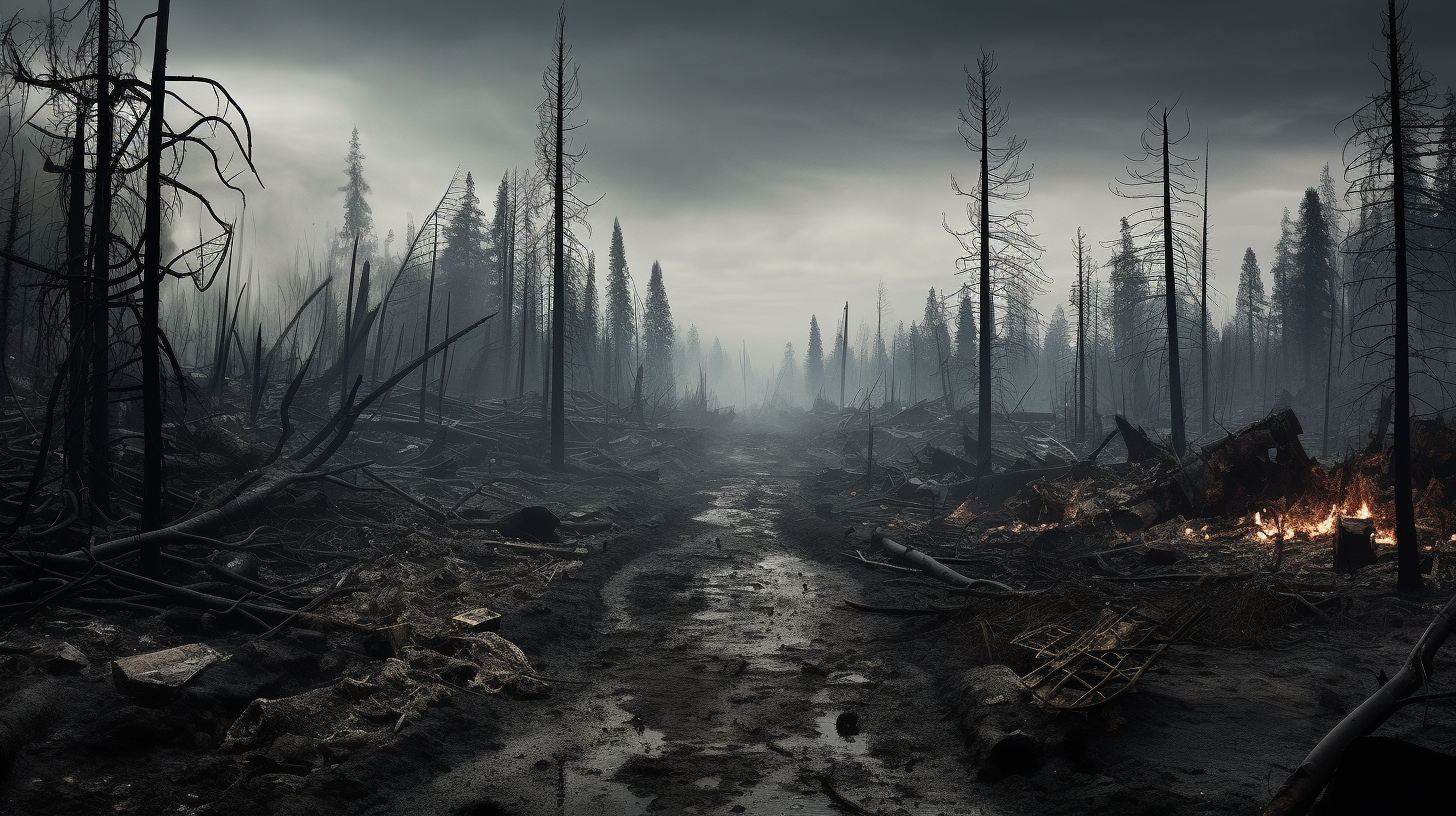The wheel of industrial advancement, ever hungry for resources, has turned our verdant sanctuaries into desolate ashes. ‘Forests to Ashes, Cities Keep Burning’ is not just a title; it’s the epitaph for a world that chose economic conquest over natural stewardship. Within these blackened pages lies the tale of not one, but countless infernos that have erupted in our concrete jungles as a direct consequence of our environmental transgressions.
Imagine a city, like any other, built on the bones of ancient woods. Its skyline once graced by the verdurous salute of treelines, now an orchestra of sirens wails at the all-too-frequent outburst of urban blazes. These are not the fires of war, but an insidious enemy born from our own environmental neglect, an abyss gazing right back at us.
Why do our cities keep burning?
As we dissect this phenomenon, we unearth a dire link between the sylvan pyres of yesterday and the urban flames of today. The forests, in their primeval wisdom, served as natural firebreaks. They were the dampers of nature’s fury, their humidity a shield against the spread of devastation. Alas, our relentless scythe of development has severed that protective boundary. Where once stood the sentinels of the forest, we now face open doors to conflagration, inviting disaster into the heart of our metropolises.
The stark reality is that these fires are fiercer and more frequent than ever. With each fallen tree, we have stripped away the earth’s cooling mechanisms, its moisture, its balance.
In one particularly harrowing account, the city of Avia, a former haven of green amidst the march of civilization, succumbed to a fiery siege. Encased in steel and glass, Avia was no stranger to man-made heat, but without its green guardians, the city turned into an oven. A spark was all it took. A lone cigarette, a short circuit — it mattered not the cause. The outcome was the same: fire, indiscriminate and ravenous.
Rescuers recount their battles through the smog, the heat buckling pavements while citizens, cloaked in soot and fear, fled before the encroaching flames. The once-tranquil parks, bereft of their cooling foliage, offered no respite. This was nature’s retribution, whispered in embers and ash.
Yet, among the charred remains, a sobering epilogue writes itself. The deviation from foresight to avarice holds us prisoner to this fiery cycle. We account for our sins in scorched artifacts: photographs that curl at the edges, memories that evaporate into the choking air, and futures that light up like tinder.
Experts are issuing warnings with urgency once reserved for wartime broadcasts. ‘Without immediate and drastic intervention,’ they declare, ‘our cities will become inhospitable infernos.’ Their words, a mélange of science and prophecy, echo the desperation of our times.
Our industrial machinery keeps drumming its beat, excavating the very ground we stand on. Local governments, tangled in bureaucracy and the immediate need for economic stability, buckle under the weight of expedient choices. Missing is the voice of governance with a vision extending beyond the next financial quarter.
What will our legacy be? A green utopia sacrificed at the altar of momentary gains, a civilization that inherited Eden and left behind an ashen dystopia?
Consider, dear reader, the silent realm where forests once reigned. Hear the howl of the fire engines, the crackling that draws closer to our homes. The narrative of destruction is often told in hushed tones, but reality demands a shout. Are we fanning the flames with our own breath, or can we reclaim the story, rewriting our final chapters before the ink dries?
The past publications, ‘Whispers of Wildlife Where Forests Once Stood’ and ‘Where the Green Once Grew’, serve as somber preludes to the crescendo of today’s chaos. They chronicled the death of flora and fauna, the silent testimony of coral reefs, and the vanishing melodies of meadows, harbingers of the current pandemonium where leaves have turned to cinders and children’s laughter is drowned out by the crackle of flames.
As your eyes drift from these words into the world, ask yourself — do the embers of hope still glow amidst the ruins, or have we settled into the warm embrace of the flames? Brace for the answer, for it shapes the legacy we bequeath to generations yet unborn, a legacy fraught with the temper of fire yet to be tamed, or relinquished entirely to the ashes of indifference.
